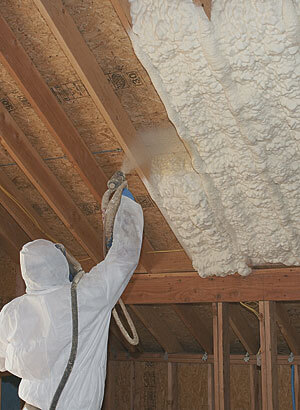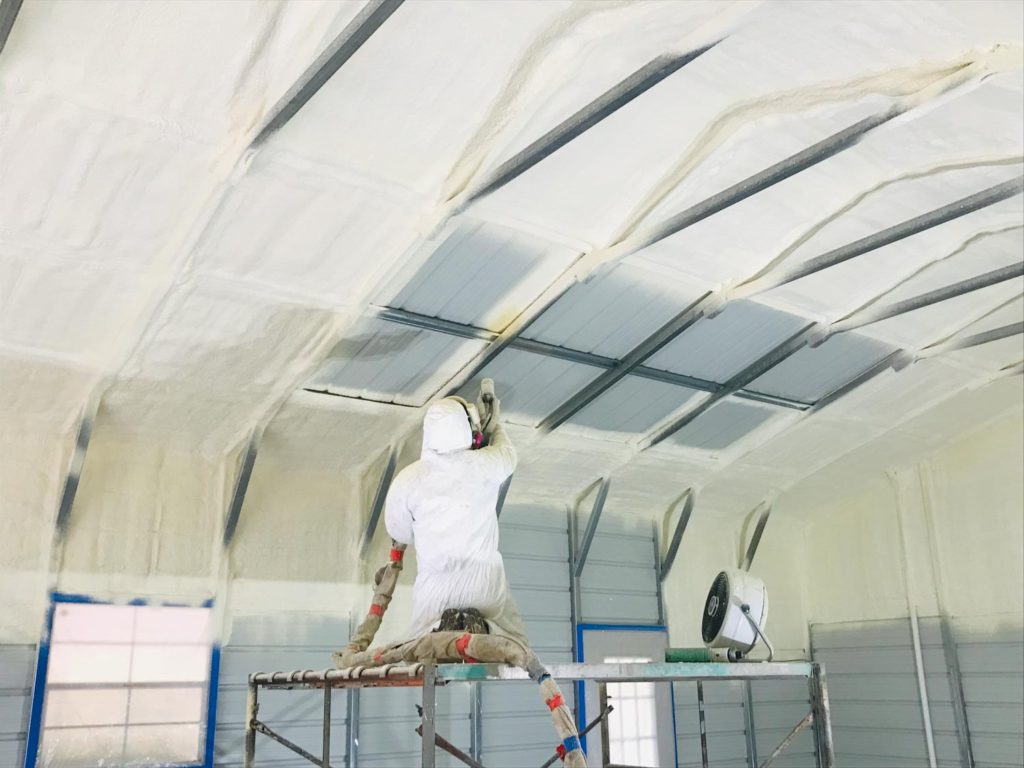The Environmental Impact of Spray Foam: Sustainability Considerations
The Environmental Impact of Spray Foam: Sustainability Considerations
Blog Article
Spray Foam: The Ultimate Option for Air Sealing and Insulation
Spray foam insulation has actually become a leading service for efficient air securing and thermal insulation, supplying an unique combination of homes that establish it aside from traditional methods. Its capability to expand and fill up voids makes it particularly effective in stopping air leak, which can substantially affect power performance. Recognizing the full range of its benefits, setup processes, and comparisons with various other insulation kinds is critical for making notified choices. As we discover these aspects, the effects for both brand-new constructions and retrofits end up being significantly considerable. What factors should affect your selection?
What Is Spray Foam?
Spray foam is a functional insulation product that integrates the concepts of air sealing and thermal resistance to enhance power efficiency in buildings. Made up mostly of polyurethane or various other similar compounds, spray foam is applied as a liquid that broadens upon call with surface areas, creating a solid, continual layer of insulation. This distinct residential property permits it to fill gaps, splits, and spaces that typical insulation materials may ignore, supplying an exceptional air seal.
There are 2 primary kinds of spray foam: open-cell and closed-cell. Open-cell spray foam is lighter and a lot more adaptable, using exceptional sound absorption and a reduced R-value per inch - Spray Foam. In contrast, closed-cell spray foam is denser, offering a higher R-value, wetness resistance, and included architectural stability to building components
The application procedure usually involves specialized devices, guaranteeing a smooth application that abides by numerous substrates, consisting of concrete, wood, and steel. This adaptability makes spray foam suitable for both brand-new buildings and retrofitting existing frameworks. Its capability to develop an airtight obstacle significantly adds to decreasing energy consumption and boosting indoor air quality, consequently making it a recommended selection amongst building contractors and house owners alike.
Advantages of Spray Foam Insulation
Among one of the most significant advantages of spray foam insulation is its exceptional capability to create a constant air obstacle, which properly decreases power loss. Unlike typical insulation materials, spray foam expands to fill up splits and spaces, making sure that air leakage is significantly reduced. This characteristic not just enhances power effectiveness however additionally leads to decrease energy costs with time.
Additionally, spray foam insulation supplies superior thermal resistance, adding to a more stable interior setting. Its high R-value per inch enables for efficient insulation in confined areas, making it excellent for attics, wall surfaces, and crawl rooms. In addition, the moisture-resistant residential properties of spray foam help protect against mold and mold development, promoting much healthier living problems.
Another crucial benefit of spray foam insulation is its sound-dampening top qualities (Spray Foam). It properly decreases noise transmission between areas, developing a quieter and extra comfy home environment. The longevity of spray foam also attracts attention, as it does not droop or settle gradually, maintaining its efficiency throughout its life-span
Just How Spray Foam Works
Comprehending how spray foam insulation functions is crucial for appreciating its effectiveness in air sealing and thermal resistance. Spray foam insulation consists of two primary components: isocyanate and polyol material. When these elements are mixed, they go through a chain reaction that causes official statement the material to increase quickly, producing a dense foam that fills splits, gaps, and dental caries.
As the foam increases, it abides by surfaces, forming a closed seal that substantially minimizes air infiltration. This particular makes spray foam insulation very efficient at preventing drafts and dampness infiltration, which can result in energy loss and damages over time. In addition, the closed-cell version of spray foam supplies premium thermal resistance due to its stiff structure, effectively lessening warmth transfer.
The one-of-a-kind buildings of spray foam enable it to satisfy irregular surface areas, guaranteeing detailed insurance coverage and a seamless obstacle. Therefore, spray foam insulation not only enhances energy efficiency however likewise contributes to boosted indoor air high quality by decreasing the accumulation of contaminants and irritants. Ultimately, recognizing the technicians behind spray foam emphasizes its function as a remarkable selection for insulation and air sealing in both industrial and household applications.
Setup Process Overview

Before installation, the room has to be effectively cleansed and prepped, making certain that surfaces are devoid of wetness, dust, and particles. Since contaminants can endanger bond and overall performance, this step is essential. Once the location is prepared, the application entails mixing both components of the spray foam, which expands upon contact and fills voids successfully.
Trained experts need to carry out the setup, making use of specific devices to make sure consistent protection and ideal thickness. Safety and security preventative measures, consisting of using safety equipment and making certain correct ventilation, are essential throughout this process. After application, the foam usually cures quickly, developing a strong obstacle that enhances energy performance.
Contrasting Spray Foam to Traditional Insulation
When assessing insulation alternatives, spray foam insulation stands out in contrast to traditional products such as fiberglass and cellulose. Unlike fiberglass and cellulose, which can allow air infiltration, spray foam increases upon application, loading gaps and gaps to develop an impermeable seal.
Furthermore, spray foam offers a higher R-value per inch than typical insulation types, providing even more efficient thermal resistance in a thinner account. This characteristic is specifically useful in areas with minimal tooth cavity depth. Furthermore, spray foam is immune to moisture and mold growth, which can be a considerable worry with cellulose and fiberglass, especially in humid atmospheres.
Nevertheless, spray foam insulation generally carries a greater in advance click here to find out more cost than its traditional counterparts. House owners must weigh this initial financial investment against lasting energy financial savings and performance benefits. Ultimately, while both insulation types offer their objective, spray foam becomes an advanced solution for modern-day insulation needs, specifically in regards to air securing and thermal performance.

Conclusion
In summary, spray foam insulation represents a very effective solution for achieving optimal air sealing and thermal resistance. Its special homes, including dampness resistance and sound dampening, make it appropriate for various applications in both brand-new buildings and retrofitting jobs (Spray Foam). Although the initial costs may be higher contrasted to standard insulation materials, the lasting benefits, such as substantial energy cost savings and improved interior air top quality, justify the investment and highlight its worth in modern-day structure methods.
Spray foam insulation has emerged as a leading solution for reliable air sealing and thermal insulation, using an one-of-a-kind mix of residential or commercial properties that establish it apart from traditional techniques.Spray foam is a functional insulation product that integrates the concepts of air securing and thermal resistance to boost power effectiveness in structures.When evaluating insulation alternatives, spray foam insulation stands out in contrast to traditional products such as fiberglass and cellulose. Inevitably, while both insulation kinds serve their objective, spray foam emerges as a more sophisticated Click Here remedy for modern-day insulation demands, specifically in terms of air securing and thermal performance.
In recap, spray foam insulation represents a very reliable service for accomplishing ideal air sealing and thermal resistance.
Report this page